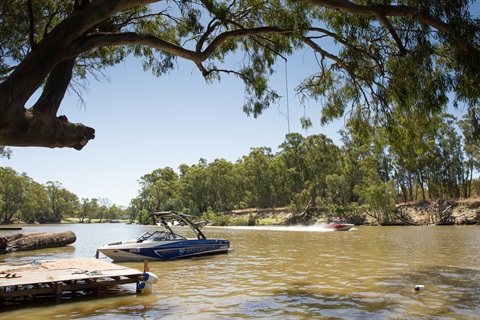Riverworks

If you want to do construction work along the river, like building walls, docks, or dredging, you will need permission from Council.
This type of work is called 'bed and bank works.' Applications for such work involve many government agencies. These include NSW State Water and the Department of Primary Industries.
Council's Factsheet 6, called Understanding Integrated Development(PDF, 531KB) gives more information about how this process works. The sections below provide more information.
Development Application Process
To apply for this development, you need to get opinions from State Government agencies and show your plans to the public.
This means your plans will go in local newspapers, letters will go to nearby owners, and signs will be put up at the site.
There are two types of input from State Government agencies:
- General referrals, where agencies give their opinions on the development to the Council.
- Integrated development referrals, where specific agencies look at the plans, and decide if they can go ahead.
If they agree, they give 'General Terms of Approval,' which are like rules for how the development can happen. If they don't give these terms, the Council can't approve the application.
This flowchart(PDF, 74KB) shows you how the process for this kind of development works.
Development Application Submission
We have made a list to help you know what papers you need for your development application. You'll need to give the Council four paper copies of all your documents and plans. Also, you'll need to give them one electronic copy of everything. Follow the process below:
Development Application Form
You need to fill out the development application form, and all property owners must sign it. You can use the Council's Application Guide to help you fill it out. There are fees you need to pay when you submit the application. The Environmental Services team at the Council can tell you how much these fees will be.
Statement of Environmental Effects
The Statement of Environmental Effects talks about how the development might affect the environment, and ways to reduce any negative effects.
You can use the Council's standard template to write this statement.
Site Photos
Having photos of the site helps people understand what the area looks like. Especially for State Government agencies that are not in Deniliquin.
Site Plan
A site plan helps you see where the proposed work will be on your property. It should include existing structures, be drawn to scale (like 1:100 or 1:200), and show which way is north.
Plans should also have the address of the site written on them.
Construction Plans
The plans should include elevation and details of how the construction will be done, including materials used.
They should be drawn to scale (like 1:100 or 1:200) and show which way is north. Also, make sure the plans have the address of the site written on them.
Work Method Statement
This document explains how you plan to do the proposed work.
Justification of Works
This statement explains why you're doing the proposed work, what other methods you've thought about, and why you've chosen the proposed method.
Vegetation Management Plan
The plan outlines the specifics of any vegetation to be removed, the reasons for its removal, and information about the new vegetation to be planted, including the species.
Post Development Consent
If the project gets approval to go ahead, you'll need to get a construction certificate from either the Council or a private certifier. You'll also need controlled activity approval from the NSW Office of Water.
You must get these approvals before commencing any work on site.